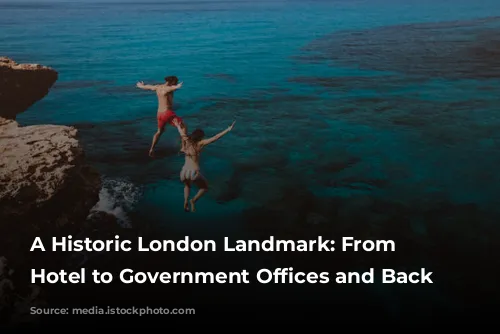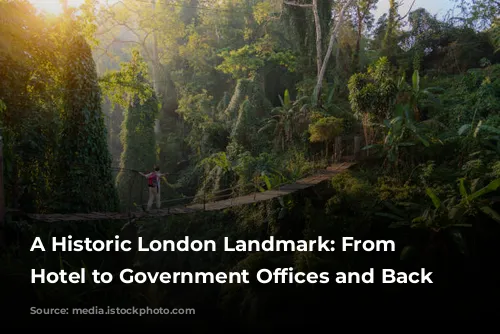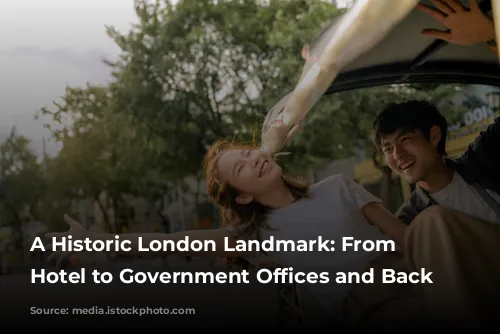The Corinthia Hotel London, a grand building at the junction of Northumberland Avenue and Whitehall Place, holds a rich history intertwined with the fabric of London itself. This majestic structure, standing proudly between Trafalgar Square and the Thames Embankment, has witnessed eras of grandeur, wartime service, and ultimately, a return to its original purpose as a luxurious hotel.
A Grand Beginning: The Metropole Hotel
Opened in 1885, the hotel, originally known as the Metropole, was an instant success. It was commissioned by the Gordon Hotels company and its construction began in 1883. The hotel’s location, a stone’s throw from the Palace of Westminster and government offices in Whitehall, ensured it became a hub for prominent figures. The 88-page brochure advertising the hotel boasted of its opulent amenities and luxurious accommodations. The hotel’s grand ballroom hosted the annual dinners of the Aero Club and the Alpine Club, and it served as the starting point for the first London to Brighton motor race in 1896. The Prince of Wales, later King Edward VII, was a frequent visitor, enjoying the hotel’s amenities and even reserving a special box in the ballroom.
A Wartime Transformation: From Hotel to Government Building
The hotel’s proximity to government offices and its prestigious status made it a prime target for requisition during wartime. During both World Wars, the Metropole served as a temporary home for government officials. The night before the British Expeditionary Force set sail for France in 1914, the two Commanders-in-Chief, Field Marshals John French and Douglas Haig, stayed at the hotel. The hotel also played a role in World War II, providing temporary accommodation for various government departments.

A Return to Glamour: Reopening as a Hotel
After World War I, the Metropole reopened its doors as a hotel, showcasing the glamour of the roaring twenties. It became renowned for its “Midnight Follies,” a popular cabaret performance. Bert Firman, a young musician, rose to fame as the bandleader for the Midnight Follies Orchestra, becoming the youngest bandleader in the world at the age of 16.
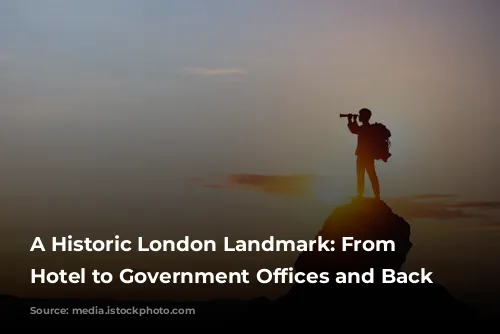
A Sporting Legacy: The Obolensky Try
The Metropole also played host to sporting events. In 1936, the England Rugby Union team, thanks to three tries by the Russian Prince Alexander Obolensky, defeated the touring New Zealand All Blacks, marking the first time England had triumphed over the All Blacks. Obolensky’s first try, a legendary run of three-quarters of the length of the field, became known as one of the greatest tries ever scored by England. Following their victory, the England team celebrated at the Metropole, where they found that the New Zealand team was also staying.

Government Ownership: A Different Kind of Occupancy
In the mid-1930s, the British government leased the entire hotel as office space. The Ministry of Labour, the Ministry of Transport, the Air Ministry, and finally, the Ministry of Defence, all called the Metropole home. During the build-up to World War II, the government again requisitioned the hotel, utilizing its rooms for various departments, including the MI9 and the Special Operations Executive.
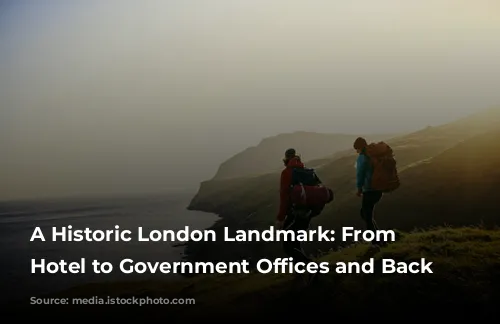
The Post-War Years: A Government Hub
After World War II, the government purchased the hotel and added it to the Crown Estate portfolio. The Ministry of Defence became the main occupant, using the hotel as an overflow building for its Whitehall complex. In the 1960s, the Defence Intelligence Staff occupied the building, while the mirrored ballroom hosted numerous press conferences and events.

From Government Office to Hotel Once Again
After decades of serving as a government office, the Metropole Building stood unoccupied. In 2007, a consortium led by Malta’s IHI plc purchased the building along with the adjoining 10 Whitehall Place for £130 million. The following year, plans were approved to transform the two buildings into a hotel and residential complex.
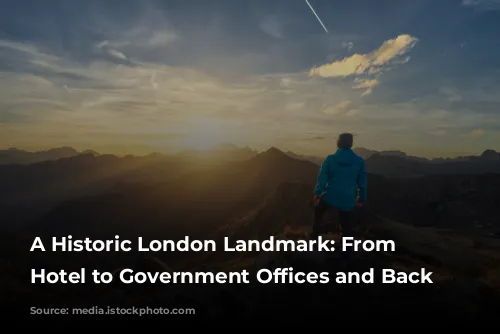
The Corinthia Hotel: A Grand Reopening
In 2011, the building reopened as the Corinthia Hotel London. The hotel maintained its grandeur and luxury while incorporating modern amenities and a spa. The hotel’s history continues to resonate, with the Corinthia Hotel serving as a backdrop for several famous movies, including Red Sparrow and Skyfall. The hotel also offers a unique “Artist in Residence” program, inviting artists from various disciplines to showcase their work in the hotel’s grand spaces.
The Corinthia Hotel stands as a testament to the grandeur and resilience of London, a building that has seamlessly transitioned from a grand hotel to a wartime government office and back to its original purpose, embodying the city’s vibrant history and enduring charm.
